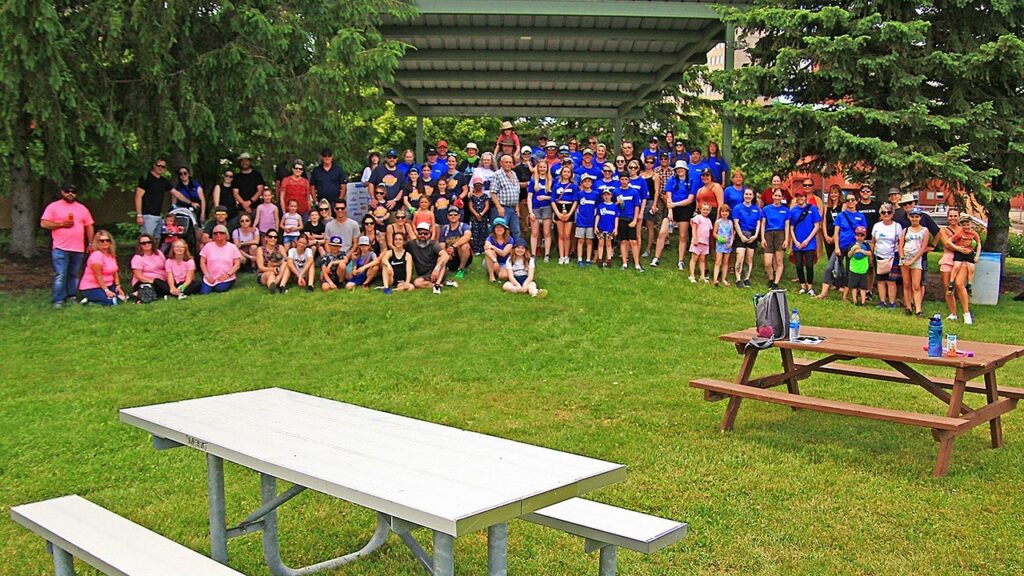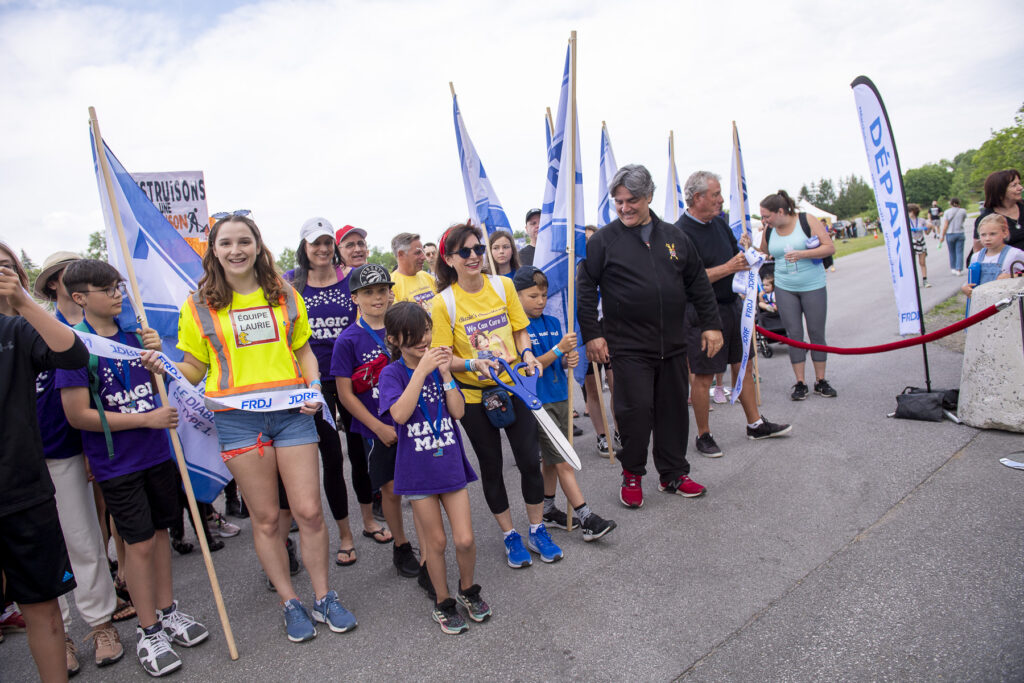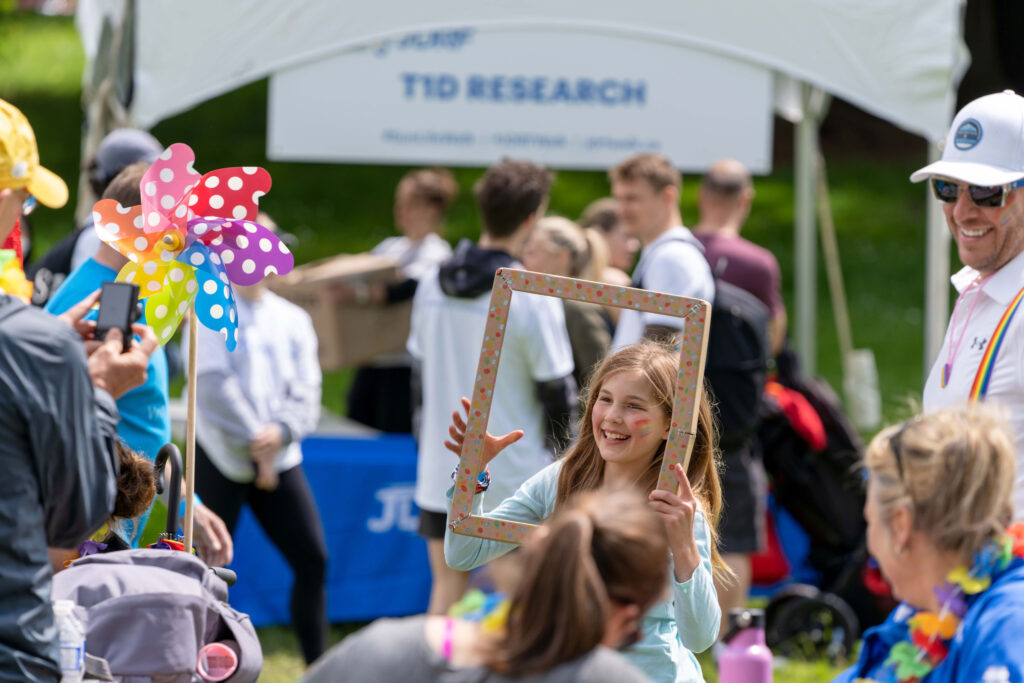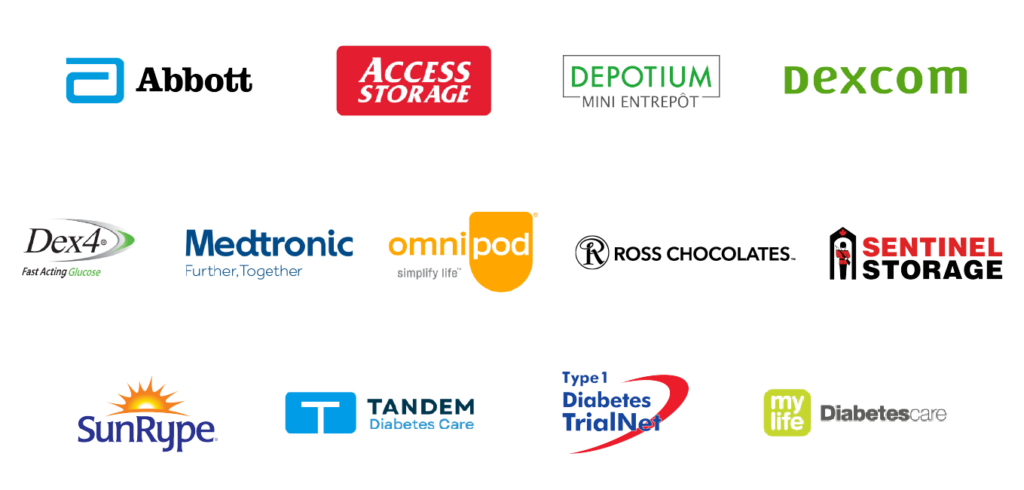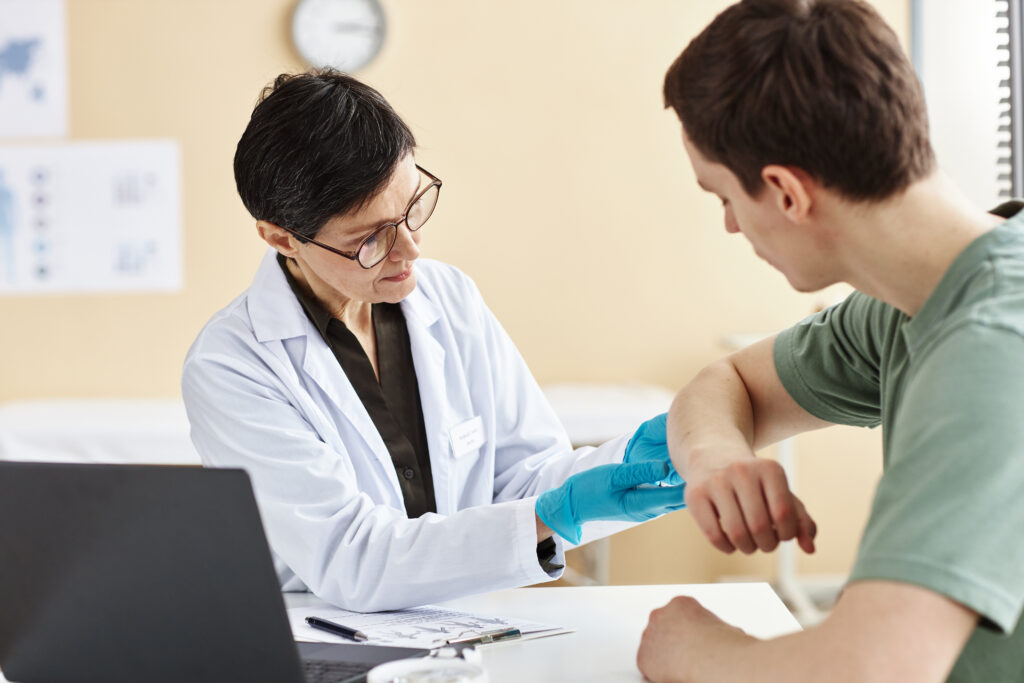
New research finds that ustekinumab, a drug commonly used to treat psoriasis, may help children and adolescents with type 1 diabetes keep making insulin for longer.
Results from a clinical trial named USTEKID, published in the journal Nature Medicine, suggest that ustekinumab may be effective in treating the early stages of type 1 diabetes in children and adolescents.
Protecting insulin-making cells
Co-funded by our JDRF affiliate in the UK, the study demonstrated that ustekinumab is effective in preserving the body’s ability to produce insulin in type 1 diabetes, bringing the goal of managing type 1 diabetes without insulin a step closer. After 12 months, the participants who were taking ustekinumab had C-peptide levels – a sign that the body is producing insulin – that were 49% higher than the group who were taking a placebo.
The study showed that ustekinumab reduced the destructive impact of specific immune cells on insulin-making beta cells. The drug treats the underlying immune process that causes type 1 diabetes, making it different from insulin injections that top up the lack of insulin for people with type 1.
Reducing the need for insulin
Dr Danijela Tatovic, who led the research project, said: “Type 1 diabetes occurs when the body’s immune system attacks and destroys the cells of the body that produce insulin. This eventually leaves the person dependent on insulin injections. Researchers are now developing ways to slow or halt the immune system attack. If such treatments can be started early, before all the insulin-making cells are lost, this could prevent or reduce the need for insulin.”
The USTEKID clinical trial
Led by researchers at Cardiff University, the clinical trial tested ustekinumab in 72 young people between 12 and 18 years old who were within 100 days of being diagnosed with type 1 diabetes. At universities and hospitals across the UK, the teenagers were given injections of either ustekinumab or a placebo seven times over 44 weeks. The participants also gave blood and urine samples and completed three short questionnaires.
In Canada, a JDRF-funded study is testing Ustekinumab in adults, within 100 days of being diagnosed with type 1. As the drug is already approved for use in Canada, if the trial results are positive, moving forward to clinical use would not only be feasible, but rapid.
This phase II/III trial is taking place at BCDiabetes in Vancouver, under the leadership of Tom Elliott, MBBS, and the University of Toronto, under Bruce Perkins, M.D., MPH, both in Canada. There will be a total of 60 participants enrolled between the ages of 18-25 years old.
A JDRF grant is also supporting Megan Levings, Ph.D. and her team, at the BC Children’s Hospital Research Institute, as they aim to harmonize the biomarkers of response in both the Canadian and UK clinical trials, increasing the sample size and more rapidly identifying whether this is an effective therapy for T1D.
What is ustekinumab?
Ustekinumab is an established immunotherapy, meaning it targets the immune cells in the body. It is used by Canadians living with immune conditions, including severe psoriasis, psoriatic arthritis, severe Crohn’s disease and severe ulcerative colitis. The drug is given as an injection, which people can give themselves at home.
A precision medicine
Dr. Megan Levings, who worked on a Canadian arm of the study, said: “We have been working on the idea that a drug like ustekinumab could be beneficial in type 1 diabetes for more than a decade so it is really exciting to see the results of this study. My team’s contribution was to set up blood tests to measure how ustekinumab affects the immune system. It turned out that the results of these tests were very important to identify which children responded the best to the drug. Personalized immunology in action!”
Crucial JDRF UK funding
The USTEKID trial provides the first clinical trial-based evidence for the role of this type of immune cell in type 1 diabetes. Identifying the specific immune cells that cause damage to the insulin-making beta cells could pave the way for precise and targeted therapies to maximise benefits and minimise side effects for people living with type 1.
Professor Tim Tree, who led the research team at King’s College London, said: “JDRF UK funding was instrumental in the biomarker experiments in the project where we examined blood samples from the trial participants. This was the key to linking a reduction in these cells with a good outcome in those treated with the drug. This offers opportunities to personalise therapy to those most likely to benefit or test newer therapies that might target this population of cells more quickly and potently.”
More research needed
While the trial demonstrates the benefit of using ustekinumab to treat type 1 diabetes, further clinical trials are required to confirm this finding and to work out which patients would benefit most from the treatment. The researchers also hope to test whether this drug could be used to treat individuals at earlier stages of type 1, before they ever need insulin therapy.
To learn more about how to be involved in the Ustekinumab clinical trials in Canada, please visit our Clinical Trials Finder tool.



